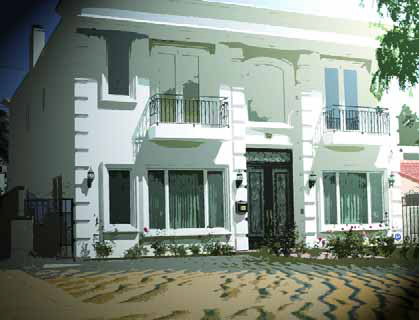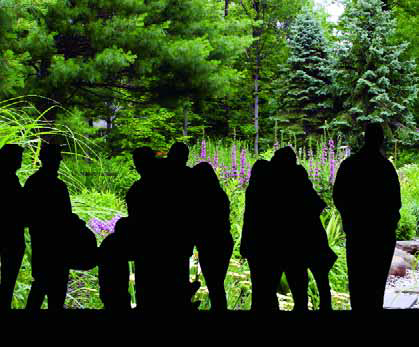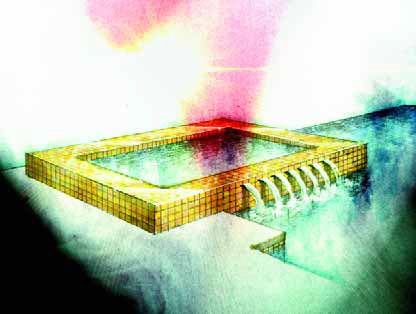column
Recently, much has been written and discussed in our local Los Angeles media - newspapers, magazines, television - about an influx of architectural styles to our area that "just don't fit in" and are generally thought of as being a blight on our collective landscape. This isn't anything new, of course. I recall similar dustups in the 1970s and '80s when the stylistic serenity of old, established neighborhoods was being disrupted by the insertion
We knew it had to happen. After several years of superheated growth, some sectors of the watershaping market are now slowing down - in some areas, dramatically so. In my travels and through dozens of conversations with watershapers and their suppliers during the past several months, I've been hearing consistently that the volume-oriented, price-driven end of the market has been hit particularly hard - off somewhere between 30 and 60 percent in some areas. That's a big number no matter which end of the spectrum is closer to the truth. It represents an enormous change from the extreme demand that most all of us were experiencing just a year ago. So now, a great many firms that were
We knew it had to happen. After several years of superheated growth, some sectors of the watershaping market are now slowing down - in some areas, dramatically so. In my travels and through dozens of conversations with watershapers and their suppliers during the past several months, I've been hearing consistently that the volume-oriented, price-driven end of the market has been hit particularly hard - off somewhere between 30 and 60 percent in some areas. That's a big number no matter which end of the spectrum is closer to the truth. It represents an enormous change from the extreme demand that most all of us were experiencing just a year ago. So now, a great many firms that were
In my last two columns, I've gone to unusually length in describing my views of the design-preparation and presentation processes. This time, the subjects are more compact but, in practical terms, no less significant and vital: permits and contracts. We left the discussion last time at the point where I've shown my clients the design package and it's time for them to decide what to do. In most cases, they choose to build - the usual outcome for me because of the way I pre-qualified my clients and communicate clearly with them at every step of the way. In general, if you've done the right things to this point and the project reflects an informed knowledge of what is involved in
In my last two columns, I've gone to unusually length in describing my views of the design-preparation and presentation processes. This time, the subjects are more compact but, in practical terms, no less significant and vital: permits and contracts. We left the discussion last time at the point where I've shown my clients the design package and it's time for them to decide what to do. In most cases, they choose to build - the usual outcome for me because of the way I pre-qualified my clients and communicate clearly with them at every step of the way. In general, if you've done the right things to this point and the project reflects an informed knowledge of what is involved in
With spring upon us, calendars of local events are filling up with garden tours of all shapes and sizes. From large estate tours and special events at botanical gardens to tours of wonderful neighborhoods staged by local garden clubs, there's much to be seen while wandering through the grounds and yards and viewing the work of other designers and architects. I've always enjoyed these tours and learn something from each and every one, whether it's about a new plant or plant combination or an installation technique shared by a generous designer or installer who's on hand for that purpose. On a completely business note, I also have to say that some of my best-ever
With spring upon us, calendars of local events are filling up with garden tours of all shapes and sizes. From large estate tours and special events at botanical gardens to tours of wonderful neighborhoods staged by local garden clubs, there's much to be seen while wandering through the grounds and yards and viewing the work of other designers and architects. I've always enjoyed these tours and learn something from each and every one, whether it's about a new plant or plant combination or an installation technique shared by a generous designer or installer who's on hand for that purpose. On a completely business note, I also have to say that some of my best-ever
It may be a cliché, but I think there's something to be said for the notion that you need to know where you've been to see where you're going: The present and the future are always both a result of (and a response to) the past. For years, voices in this magazine have described, defined and advocated changes in the way the watershaping industry works. I, for one, have written volumes on what the pool and spa industry was once like and how the benefits of elevating our approaches flow to everyone from suppliers, designers and contractors to consumers as well. I've also meditated more than once on how professionals on the
It may be a cliché, but I think there's something to be said for the notion that you need to know where you've been to see where you're going: The present and the future are always both a result of (and a response to) the past. For years, voices in this magazine have described, defined and advocated changes in the way the watershaping industry works. I, for one, have written volumes on what the pool and spa industry was once like and how the benefits of elevating our approaches flow to everyone from suppliers, designers and contractors to consumers as well. I've also meditated more than once on how professionals on the
Last time, I described (at great length, as you may have noticed) what happens in the time between my initial phone conversation with clients and a point just ahead of my formal presentation of a design. It's an involved process that uses all of the information I've gleaned from my clients about what they want, what they think they need and what they ultimately expect to have in their backyard environments. It's about understanding the underlying circumstances, deciding what should be done and, finally, assembling all of that insight into a


















